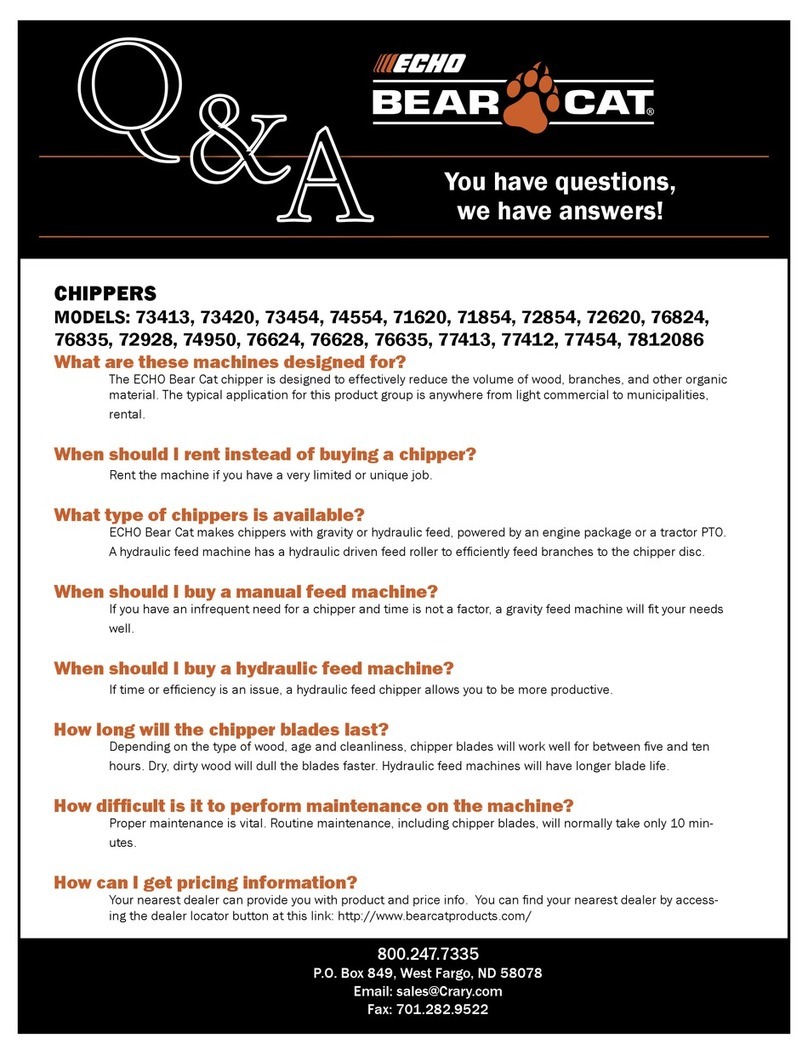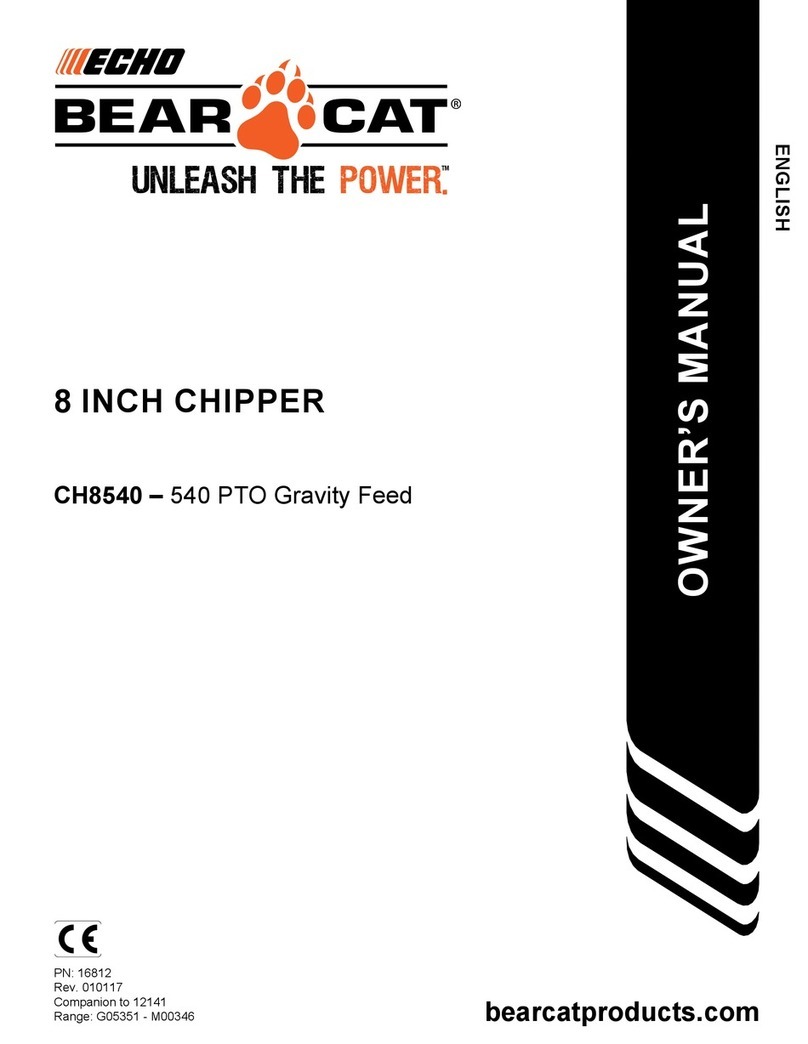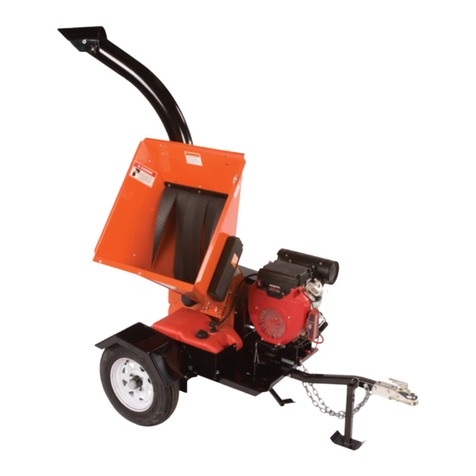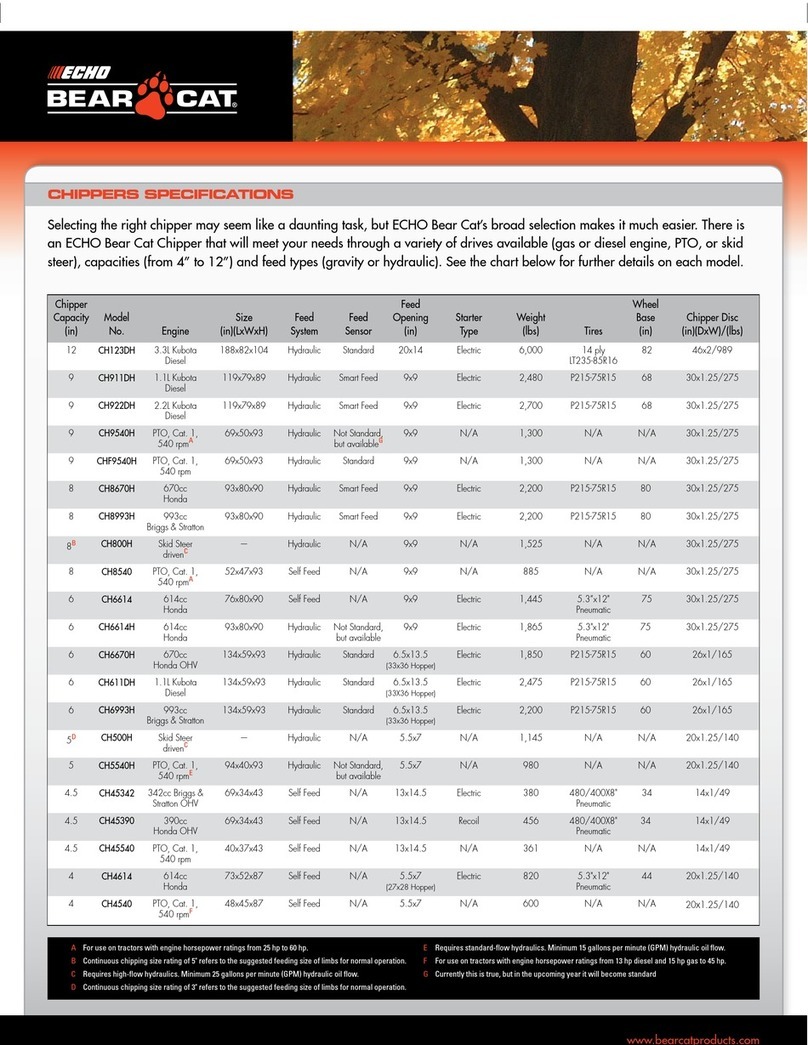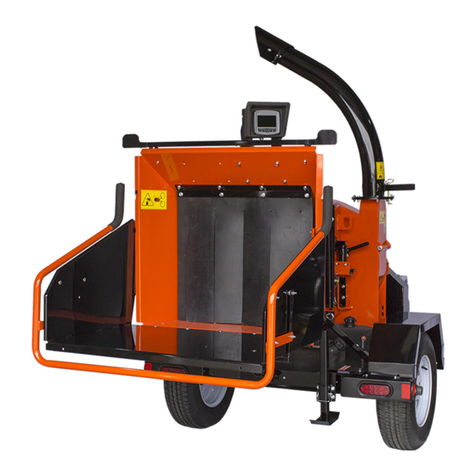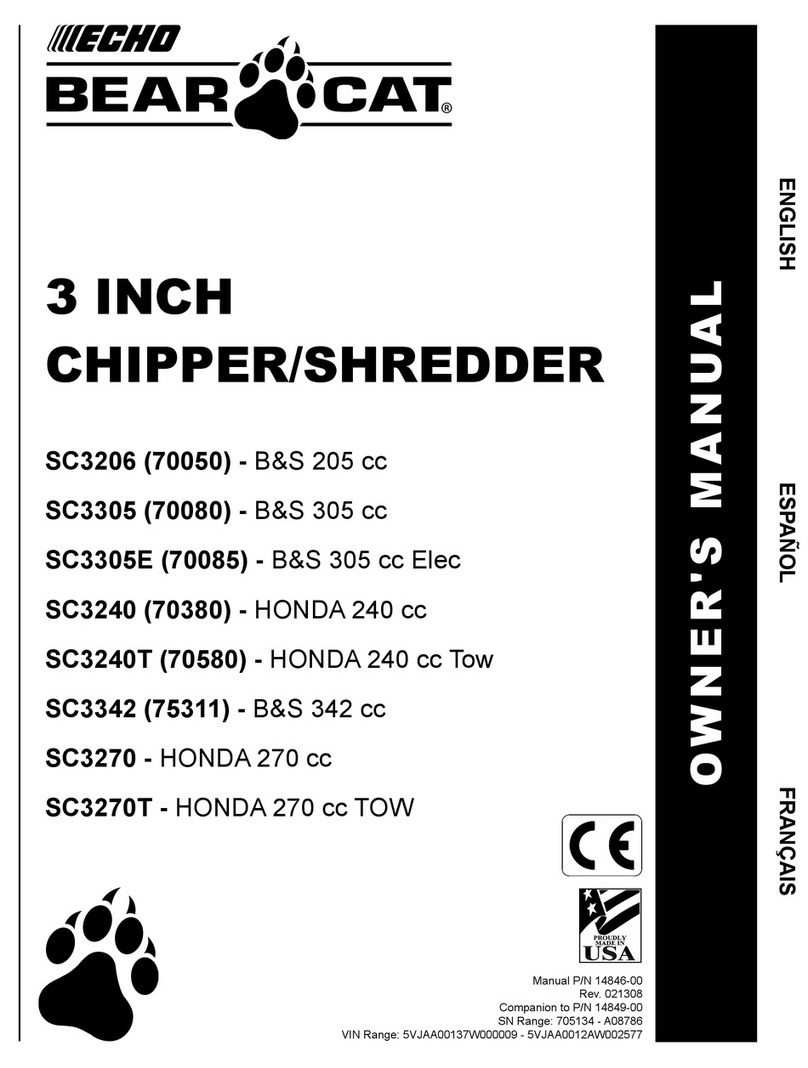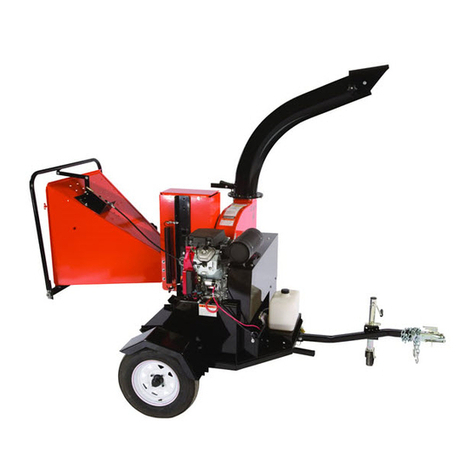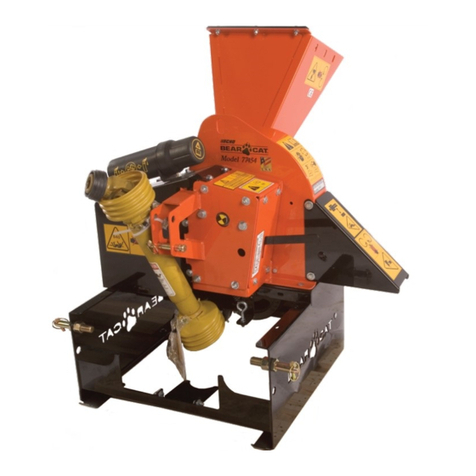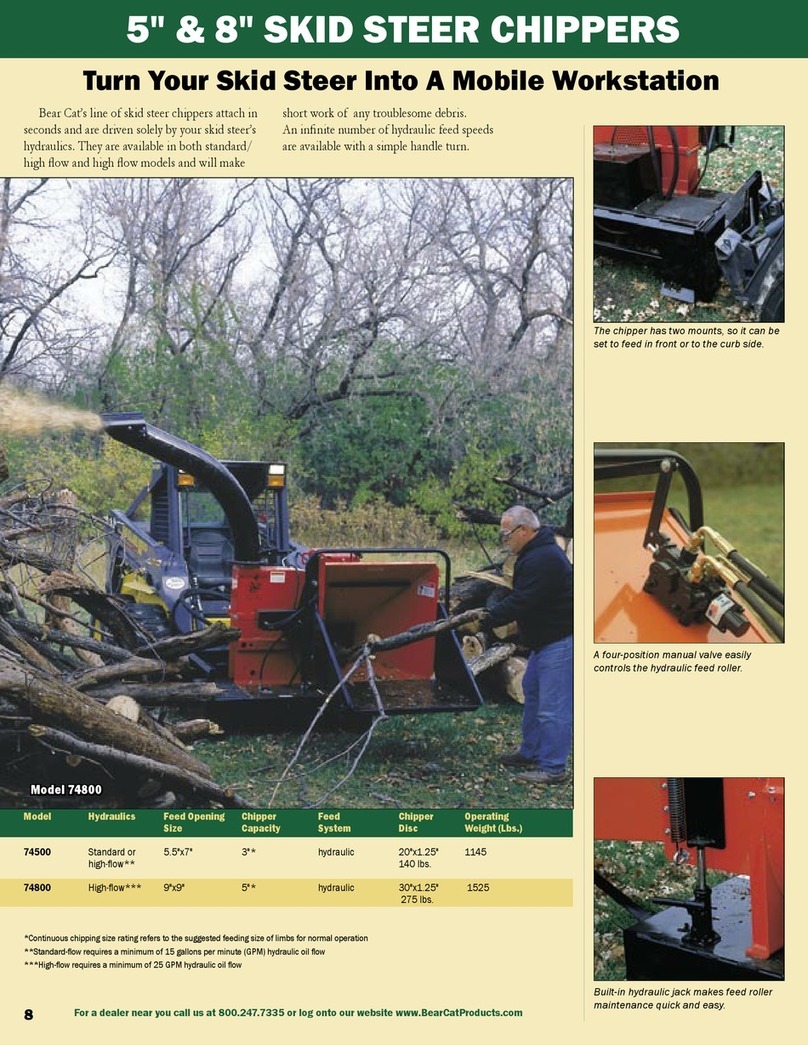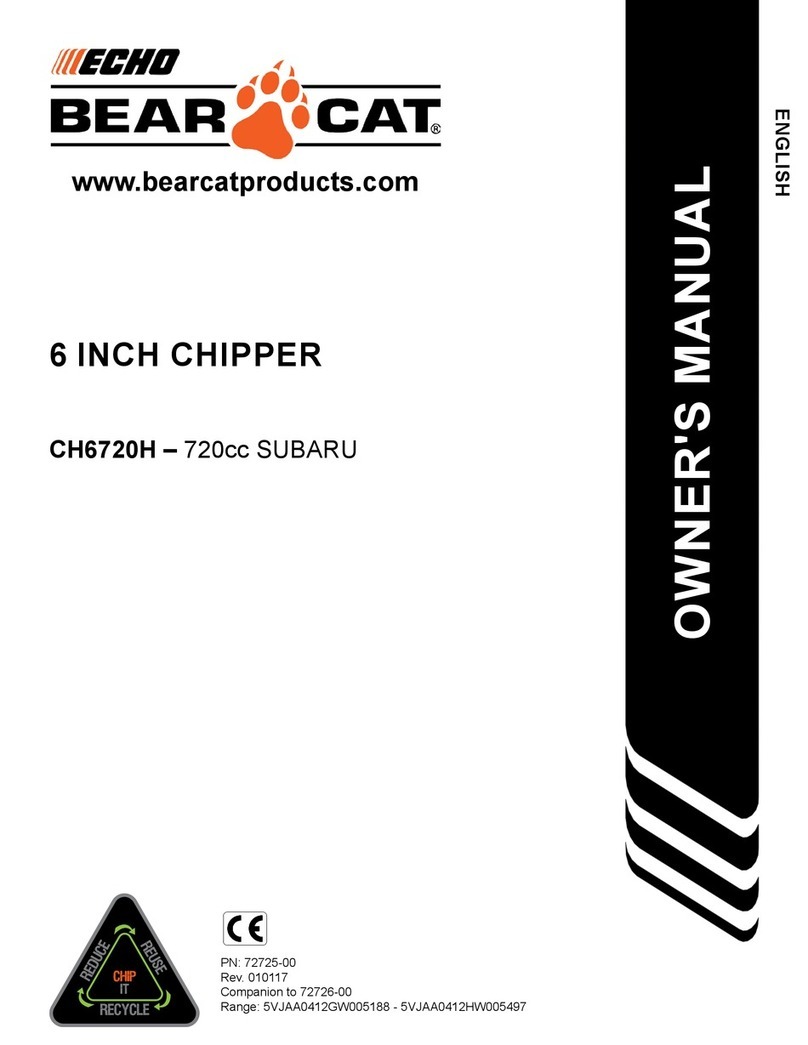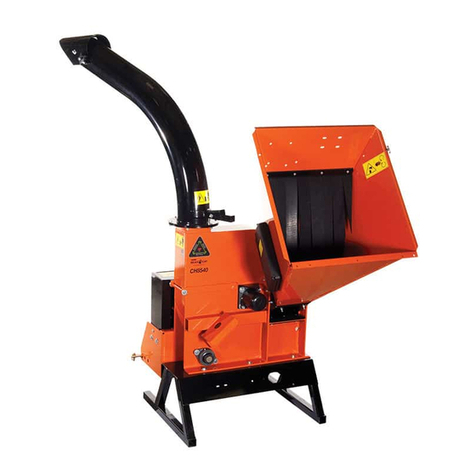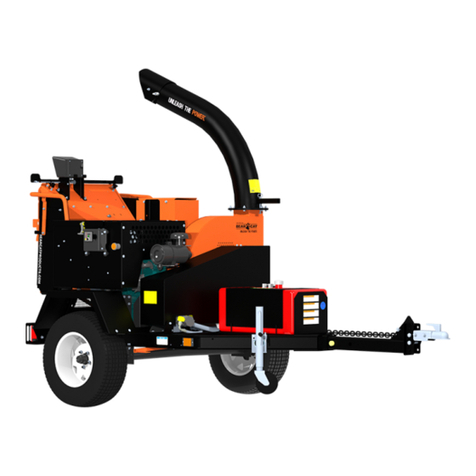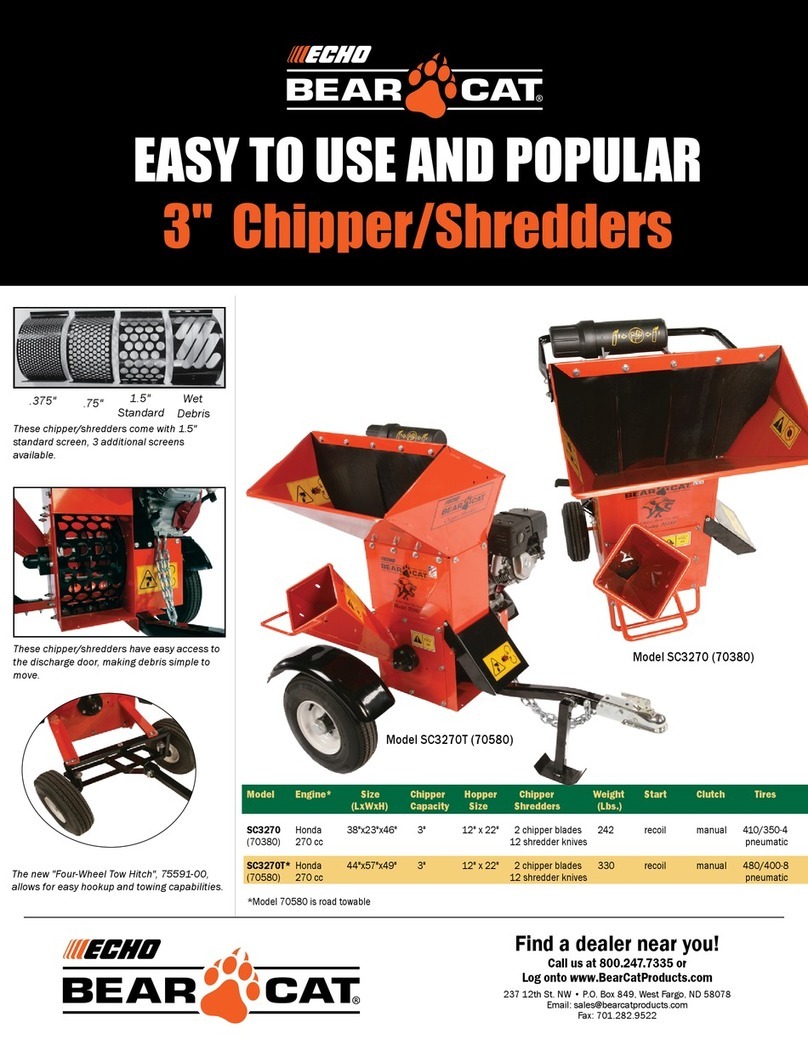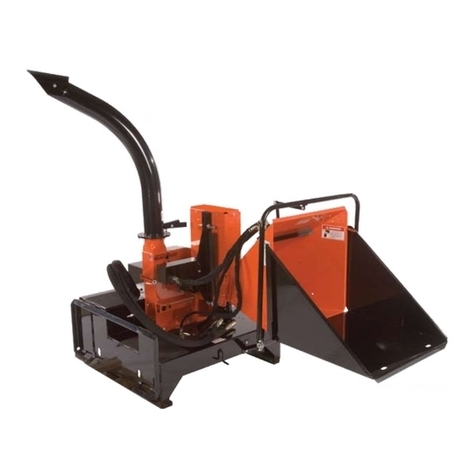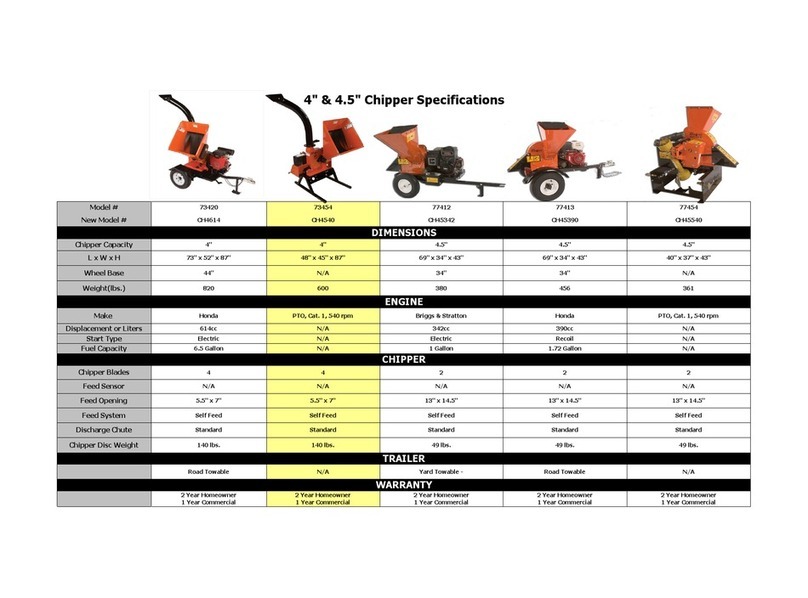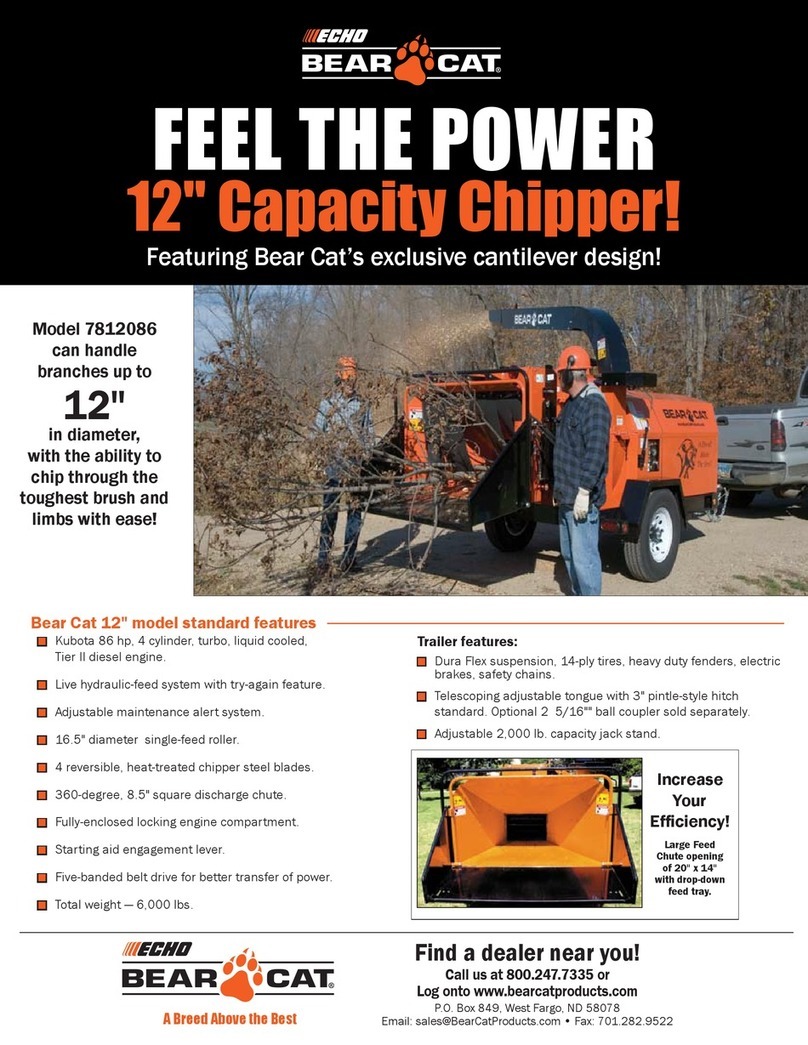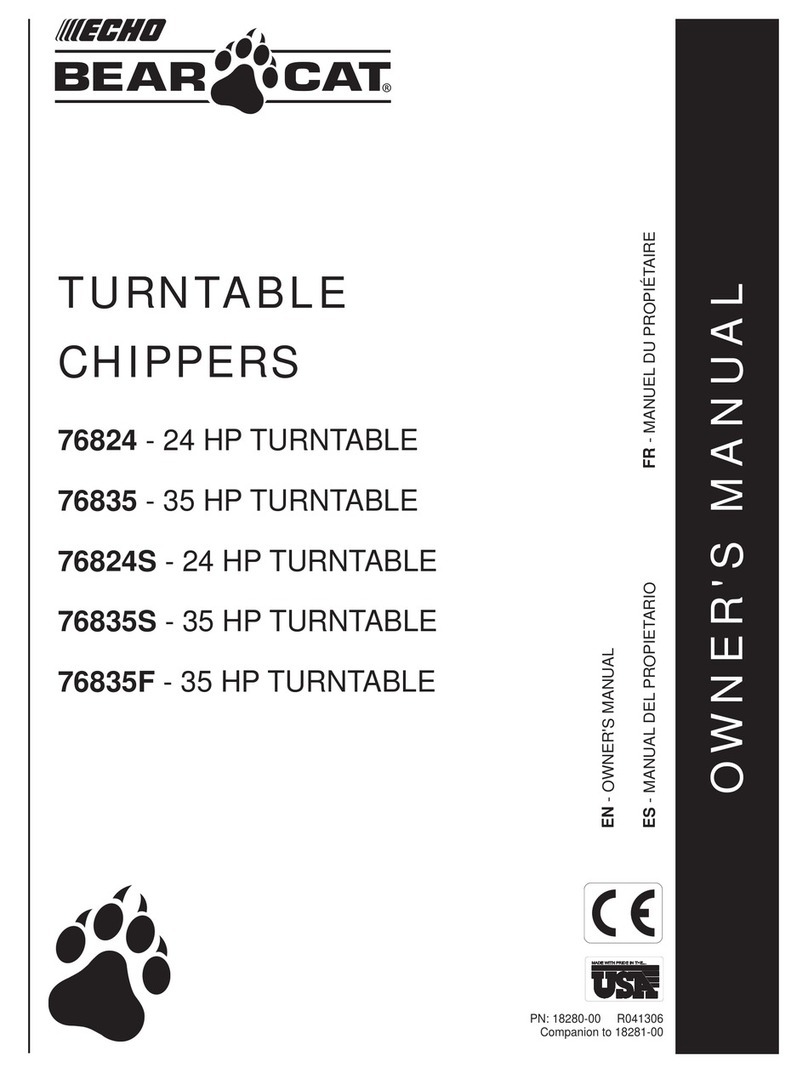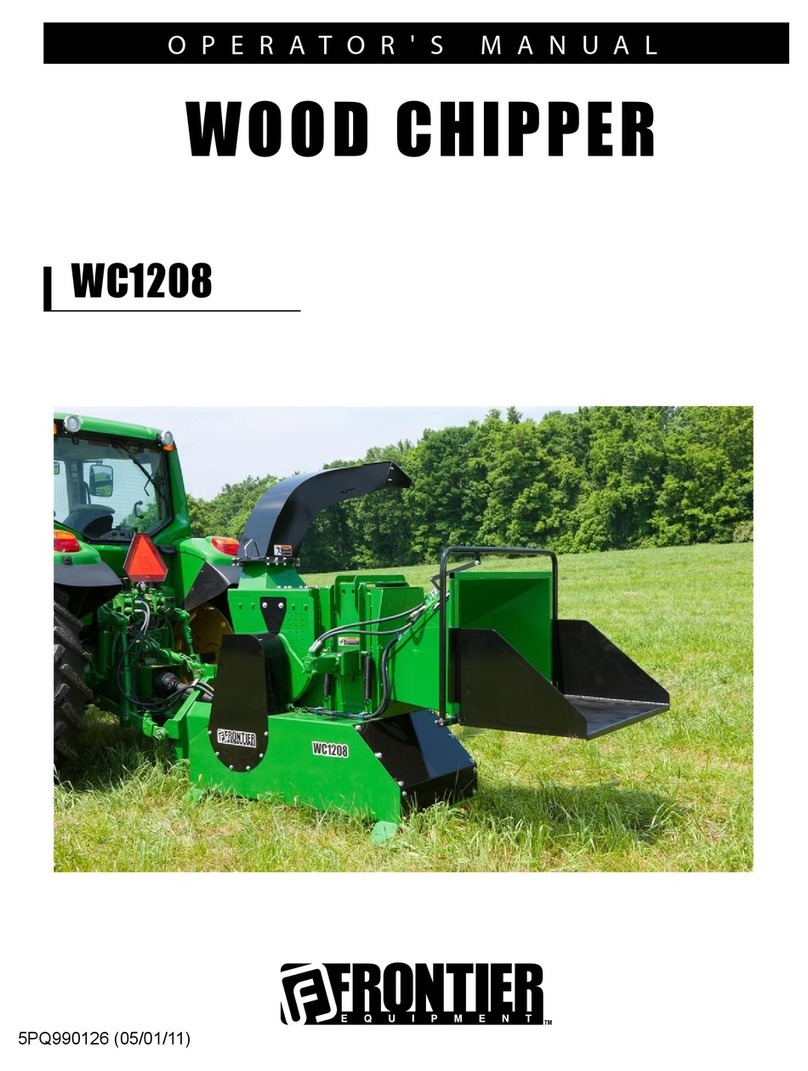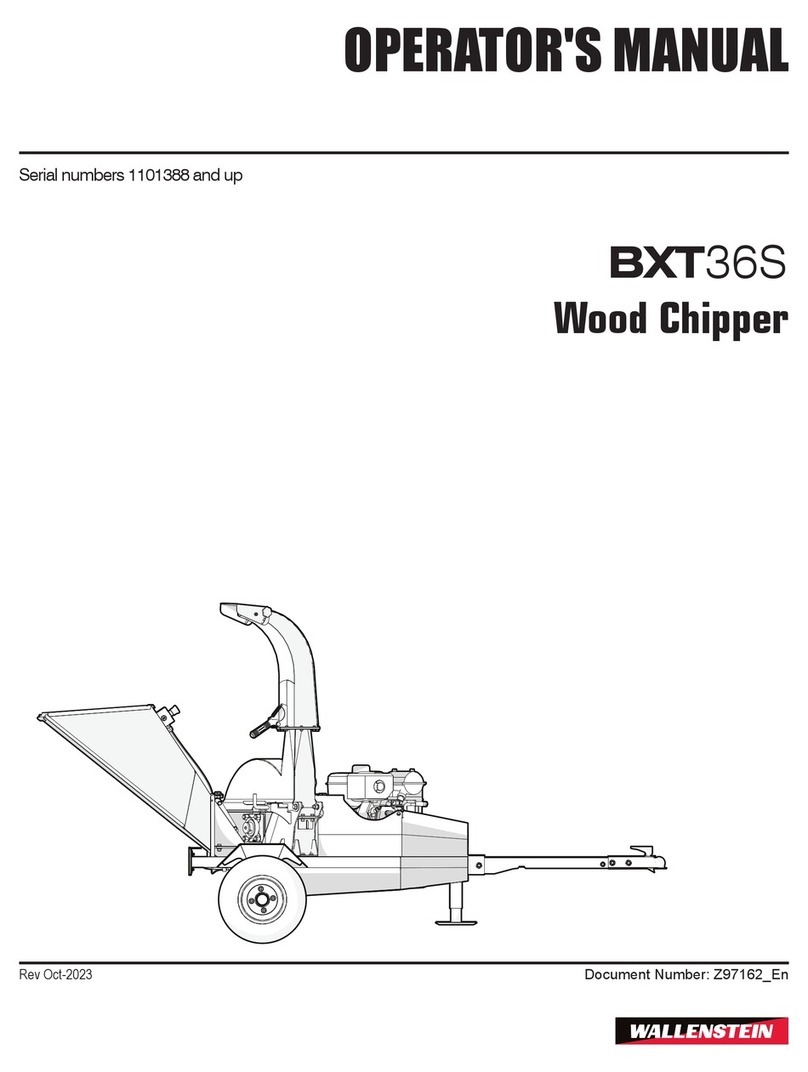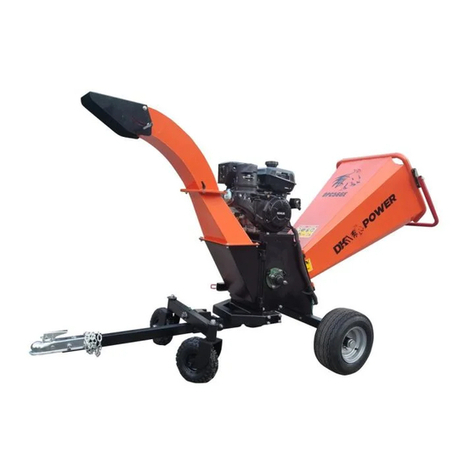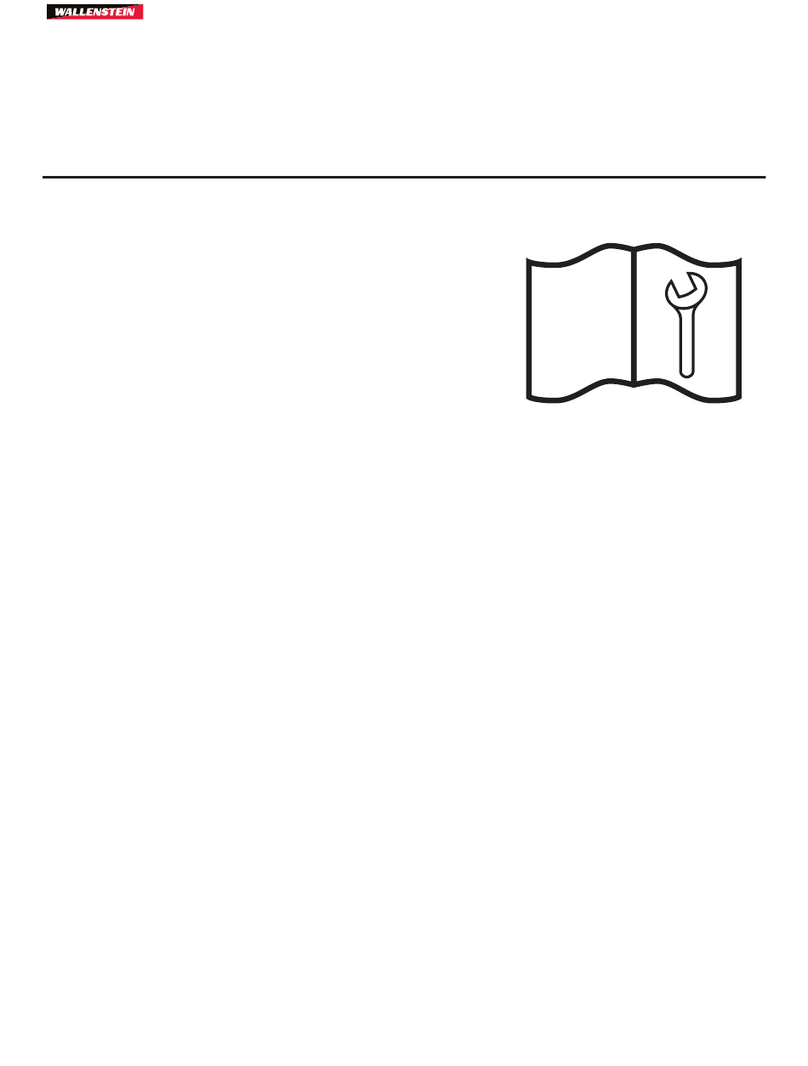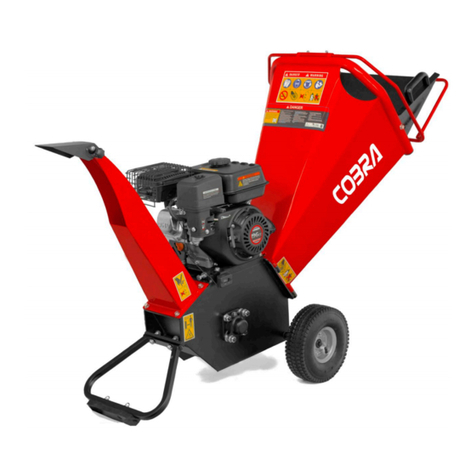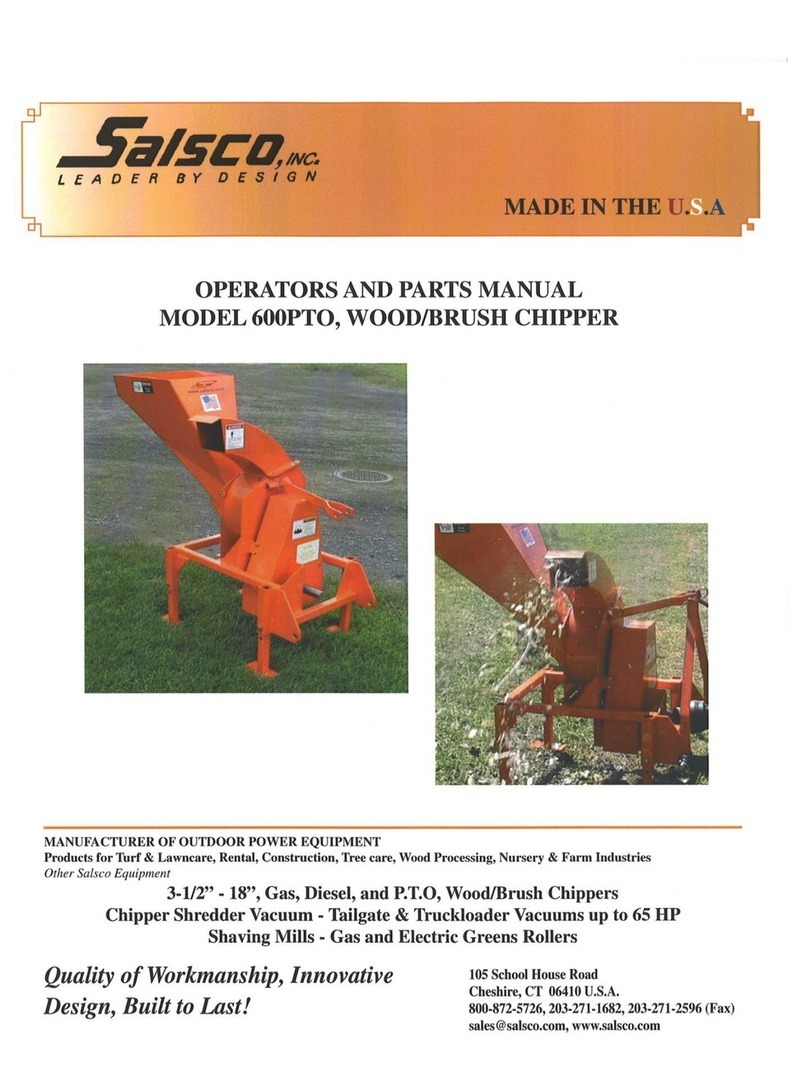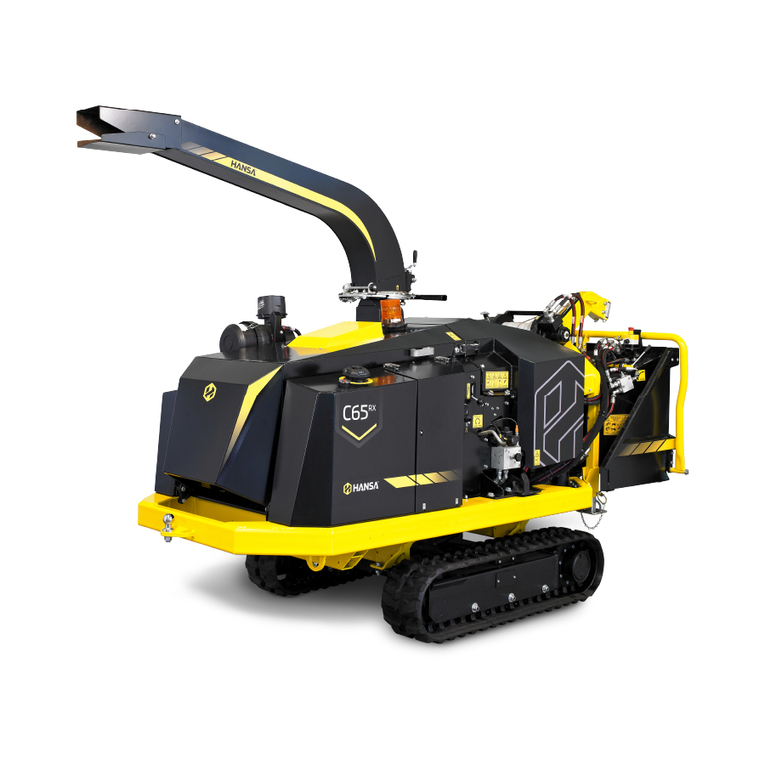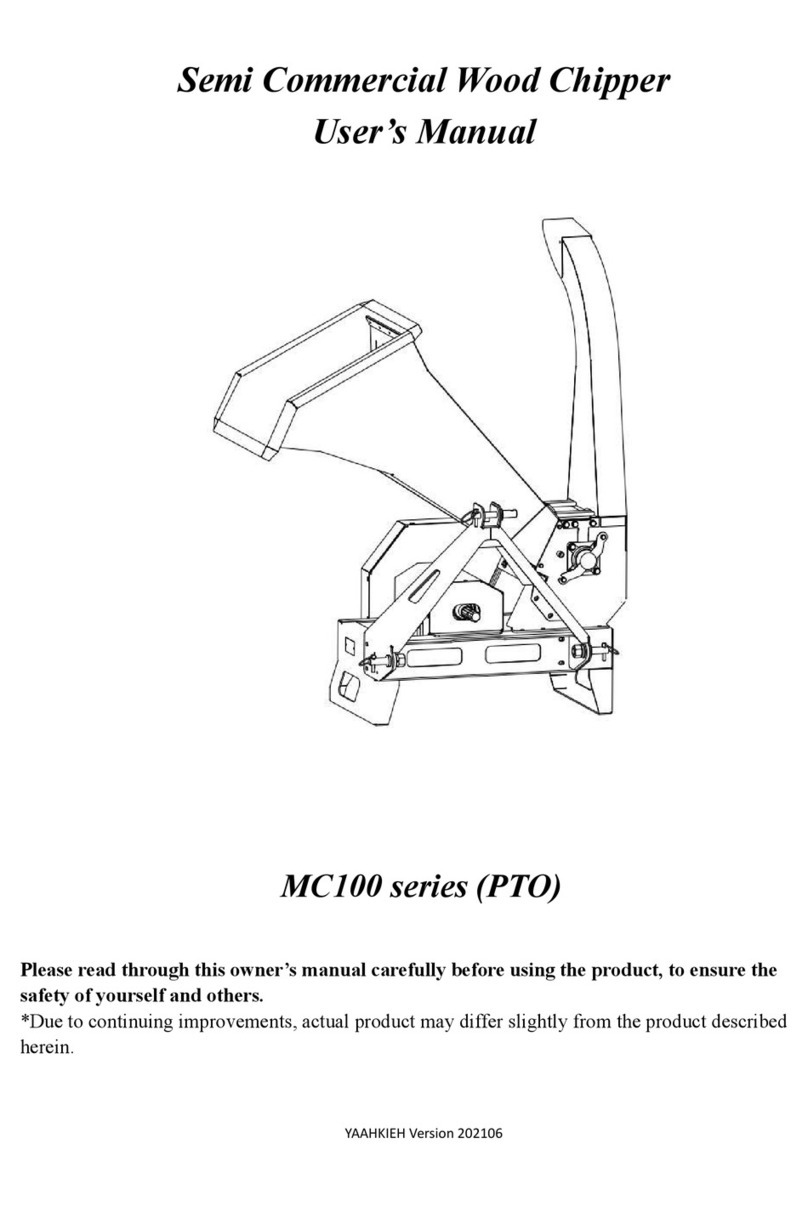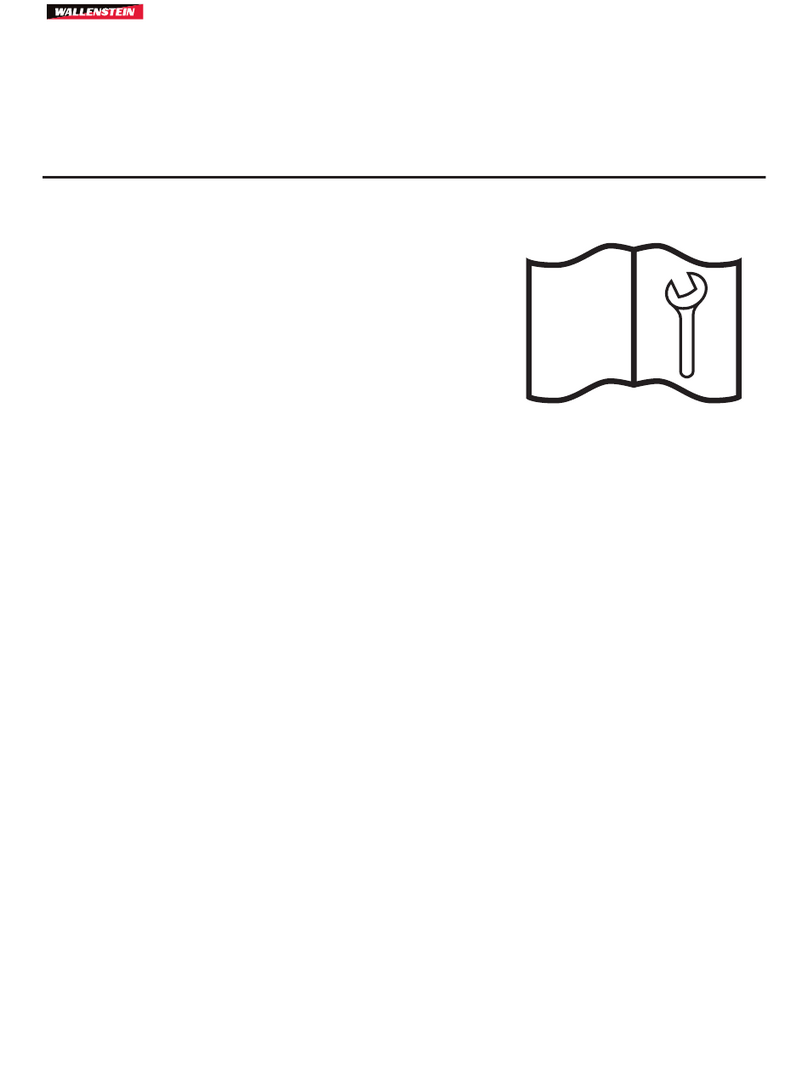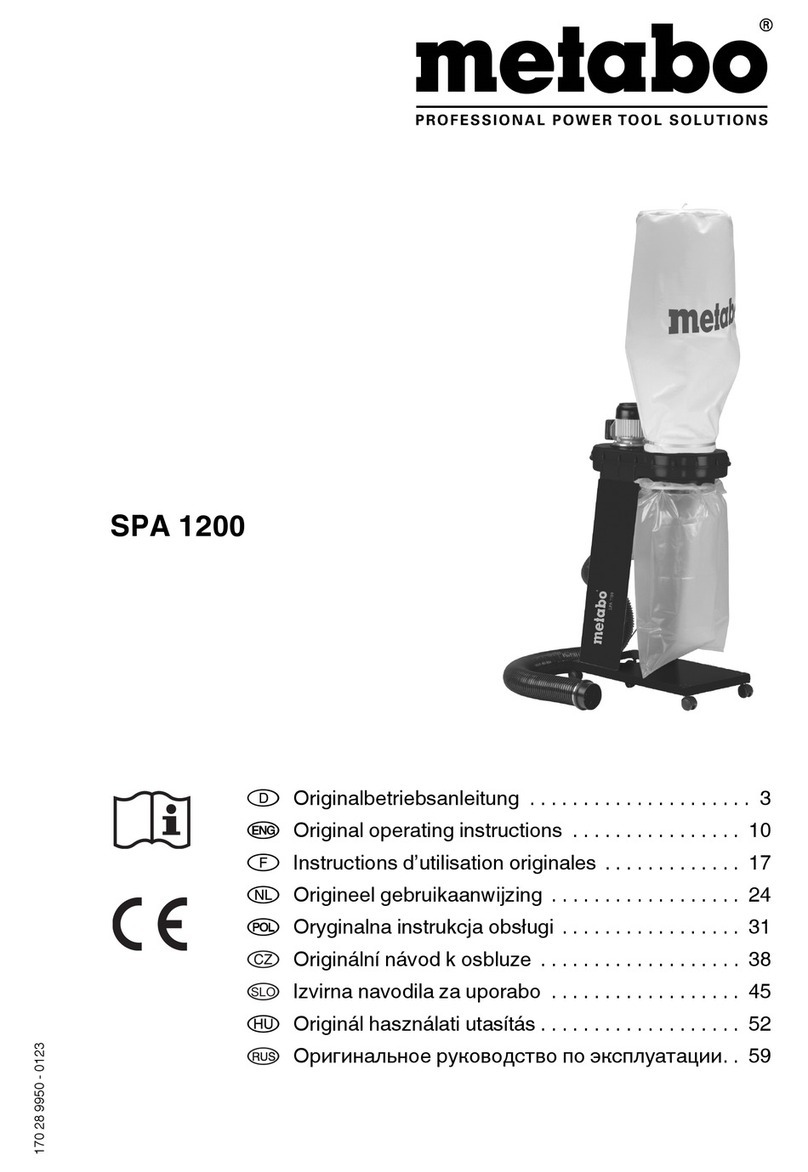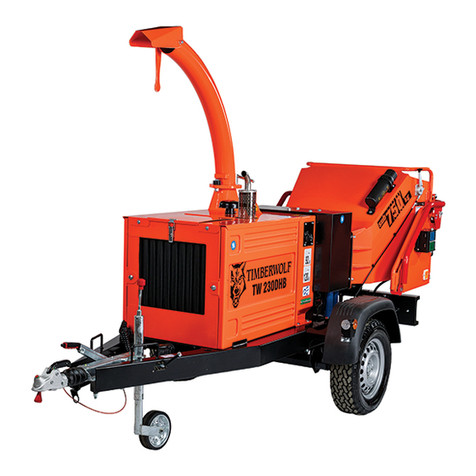
25 INCH CHIPPER
SAFETY
1. Always stand clear of discharge area when operating
this machine. Keep face and body away from feed
and discharge openings.
2. Keep hands and feet out of feed and discharge
openings while machine is operating to avoid serious
personal injury. Stop and allow
machine to come to a complete
stop before clearing obstructions.
3. Set up your work site so you are
not endangering trac and the
public. Take great care to provide
adequate warnings.
7. Do not operate this equipment in
the vicinity of bystanders. Keep
the area of operation clear of
all persons, particularly small
children. It is recommended that
bystanders keep at least 50 feet
(15 meters) away from the area of operation.
8. Do not allow children to operate this equipment.
9. Use only in daylight or good articial light.
10. Do not run this equipment in an enclosed area. Engine
exhaust contains carbon monoxide gas, a deadly
poison that is odorless, colorless and tasteless. Do not
operate this equipment in or near buildings, windows
or air conditioners.
11. Always use an approved fuel container. Do not remove
gas cap or add fuel when engine is running. Add fuel
to a cool engine only.
12. Do not ll fuel tank indoors. Keep open ames, sparks,
smoking materials and other sources of combustion
away from fuel.
13. Do not operate machine without shields in place.
Failure to do so may cause serious injury or death.
14. Keep all guards, deectors, and shields in good
working condition.
15. Before inspecting or servicing any part of this machine,
shut o the machine and make sure all moving parts
have come to a complete stop. Disconnect the battery
and remove the ignition key where applicable.
16. Check that all screws, nuts, bolts, and other fasteners
are secured, tightened and in proper working condition
before starting the machine.
17. Do not transport or move machine while it is operating
or running.
4. Do not climb on machine when operating. Keep proper
balance and footing at all times.
5. Check cutting chamber to verify it is empty before
starting the machine.
6. The rotor will continue to rotate after being disengaged.
Shut o the machine and make sure all moving parts
have come to a complete stop before inspecting or
servicing any part of the machine. Disconnect the
battery and remove the ignition key if applicable.
7. Do not insert branches with a diameter larger than
the max chipper capacity into machine or machine
damage may occur.
8. When feeding material into machine, do not allow
metal, rocks, bottles, cans or any other foreign material
to be fed into the machine.
9. Ensure debris does not blow into trac, parked cars,
or pedestrians.
10. Keep the machine clear of debris and other
accumulations.
11. Do not allow processed material to build up in the
discharge area. This may prevent proper discharge
and can result in kickback of material through the feed
opening.
12. If the machine becomes clogged, the cutting
mechanism strikes any foreign object, or the machine
starts vibrating or making an unusual noise, shut o
machine immediately and make sure all moving parts
have come to a complete stop. Disconnect the battery
and remove the ignition key if applicable. After the
machine stops: A) Inspect for damage, B) Replace
or repair any damaged parts, and C) Check for and
tighten any loose parts.
13. On electric start models, disconnect cables from
battery before doing any inspection or service.
Remove key.
14. Check blade bolts for proper torque after every 8 hours
of operation. Check blades and rotate or resharpen
daily or as required to keep blades sharp. Failure to do
so may cause poor performance, damage or personal
injury and will void the machine warranty.
1.4 OPERATION SAFETY
